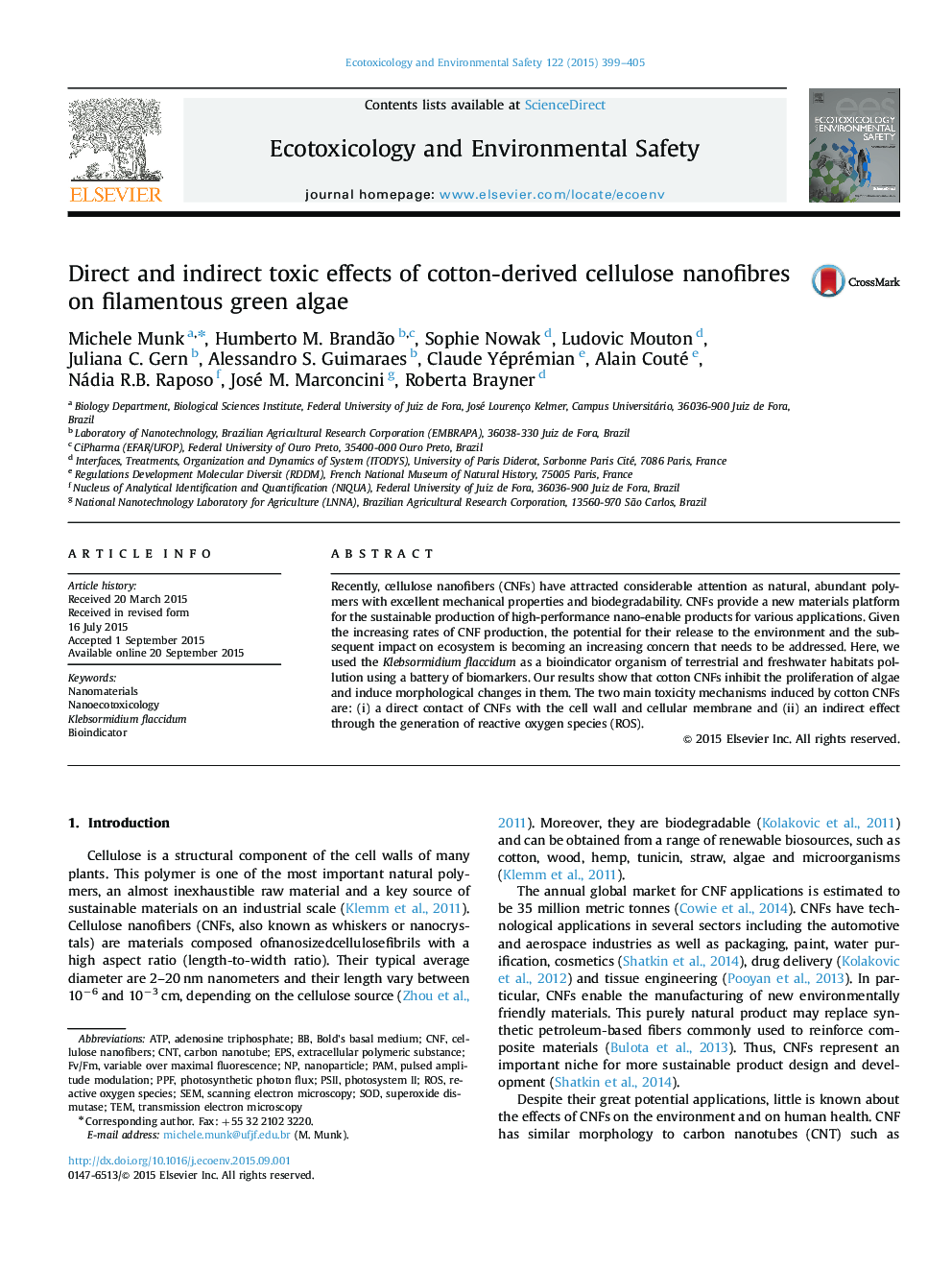| Article ID | Journal | Published Year | Pages | File Type |
|---|---|---|---|---|
| 4419533 | Ecotoxicology and Environmental Safety | 2015 | 7 Pages |
•K. flaccidum was used as a model organism to investigate the toxicity of cotton CNF.•CNF were characterized by particle size distribution, zeta potential and TEM.•CNF showed cytotoxic effects towards algae K. flaccidum and induce oxidative stress.•Oxidative stress and physical damage to cells could explain the toxicity of CNF.
Recently, cellulose nanofibers (CNFs) have attracted considerable attention as natural, abundant polymers with excellent mechanical properties and biodegradability. CNFs provide a new materials platform for the sustainable production of high-performance nano-enable products for various applications. Given the increasing rates of CNF production, the potential for their release to the environment and the subsequent impact on ecosystem is becoming an increasing concern that needs to be addressed. Here, we used the Klebsormidium flaccidum as a bioindicator organism of terrestrial and freshwater habitats pollution using a battery of biomarkers. Our results show that cotton CNFs inhibit the proliferation of algae and induce morphological changes in them. The two main toxicity mechanisms induced by cotton CNFs are: (i) a direct contact of CNFs with the cell wall and cellular membrane and (ii) an indirect effect through the generation of reactive oxygen species (ROS).
Graphical abstractFigure optionsDownload full-size imageDownload as PowerPoint slide
